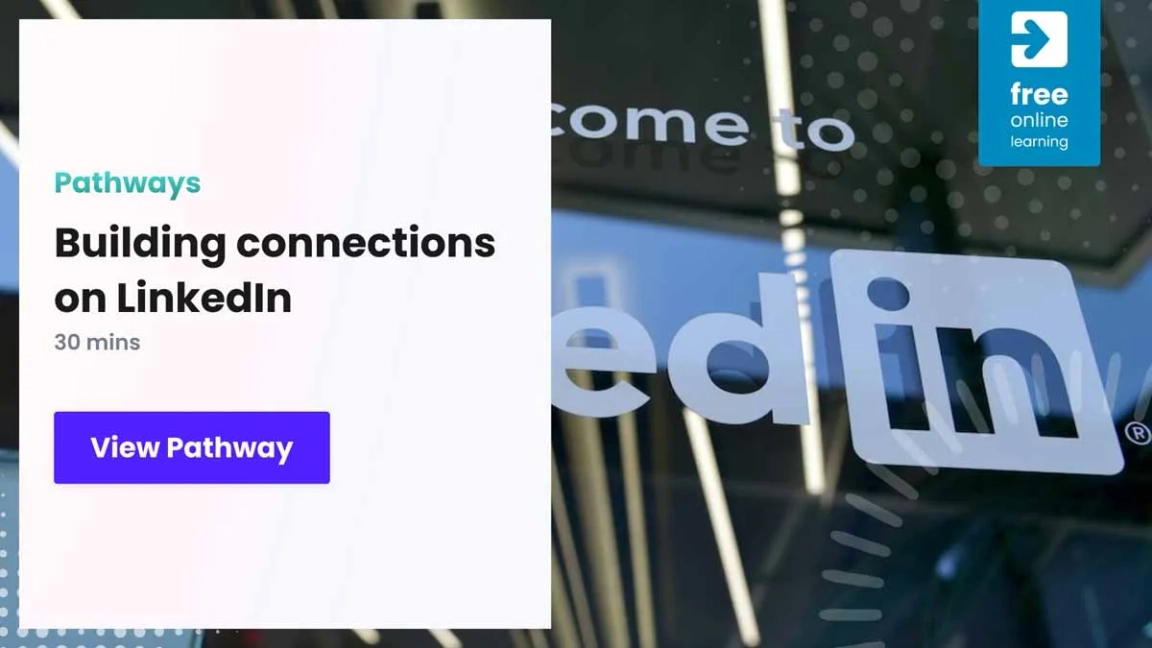Careers advice and planning
How to promote your work through social media
25 Jan 2023, 13:37
With the help of recent graduate and Instagrammer Sophie Olive, we let you in on the best ways to promote your work so that you get noticed by graduate employers in the media or marketing sectors.

You might have written the best article in the world or created an industry-leading marketing campaign, but who’s going to see it if you don’t promote it?
Whether you’re looking for your first graduate job in journalism, publishing, marketing, PR, photography or advertising, being able to promote your work is a valuable skill. Promotion can be as important as the content. You might have written the best article in the world or created an industry-leading marketing campaign, but who’s going to see it if you don’t promote it? In some cases, your social media account can be a fantastic example of your work in and of itself – as well as helping to build your personal brand.
With tons of social media apps and websites out there, it can be easy for your online profiles to get lost in the white noise. To rise above it, try our top tips to help you to create an effective and relevant online presence that will impress prospective graduate employers from the marketing and media sectors who are doing the inevitable social media scan.
Jump to: Instagram | LinkedIn | Twitter | Blogs
Using Instagram to promote your work
Instagram’s focus on eye-catching image-based posts makes it an ideal platform for budding photographers, artists, animators and designers to promote their work. But it can also serve as an example of your work in itself if you gain a large following and are seeking a job that involves social media or marketing.
Sophie Olive posts marketing and social media tips on her Instagram account @sophieolivemarketing, which she set up in July 2020 after completing a degree in marketing management at the University of Lincoln. She has since gained over 21,000 followers. Here are her top tips for getting your work noticed by as many people as possible – including prospective employers:
- Engage with people and your following will grow naturally: ‘I don’t want to be the kind of person who focuses on followers, but it’s important to remember that the number of followers does equal how many people are enjoying your account. When I started my account, it was just to help people; I never expected or planned for it to grow to what it is now. I’ve mainly grown a following from finding new people in my field with similar interests to me, connecting with them and also posting relevant content that people are searching for.’
- Be active and present on your account: ‘People are not going to follow you if you’re just posting once a week and not at any other time. I think being consistent is also key, so working out which times and days you’re going to post and showing up on those times and days. I post at half past eight each morning and people expect that now because I’ve been doing it for so long.’
- Keep up with social media trends and changes: ‘It’s about being aware of what Instagram is doing that’s new, how its algorithm works and what it’s promoting and pushing. Recently, reels [short video clips] have been the main source of my growth but that might change. Reels didn’t even exist a year ago, whereas now they’re such a massive thing. Up until about 8,000 followers, I didn’t see much growth from using reels but then I suddenly had a few that went crazy and doubled my followers in just a few months.’
Using LinkedIn to promote your work
LinkedIn is the go-to social networking site for all things career related. You can share links to your work either as posts on its news feed or in the ‘publications’ section of your profile (under ‘accomplishments’).
Promoting your work on LinkedIn can sometimes even lead directly to a job offer. Sophie recalls how she secured her job as a digital marketing executive with a small e-commerce business: ‘After I shared a few milestones that I’d hit with my Instagram on my LinkedIn, I had a lot more interest from people wanting to interview me. My current boss reached out to me in a LinkedIn message stating that he had come across my profile and seen that I was a recent graduate that might have been interested in a job role they had. I later learned that he had found me through LinkedIn’s #OpenToWork feature, which I’d recommend using to help you get noticed.’
LinkedIn is also a valuable tool for making contacts, developing your commercial awareness and much more. The following articles will help you make the most of it:
- A guide to creating the perfect LinkedIn profile
- Research, networking and building your brand on LinkedI
Using Twitter to promote your work
If you’re not already on Twitter, it’s about time you set yourself up an account. This is your chance to contribute to the debate on issues and trends in your field of interest.
Whether you’ve written an article while on work experience at a magazine or come up with an innovative new way of advertising for your university society to recruit new members, you should tweet a subject line and then a link to it. Don’t beg people to read it, instead say what’s unique about it. For example, does your article offer something new to an industry debate? Or, perhaps your advertising idea has led to a record number of new student recruits?
Make sure you use hashtags to filter your tweets into specific searches too. This is to increase the chance of your work being looked at by a relevant audience. You can hashtag general terms such as marketing, or you can use key words or trending topics that are specific to the subject matter you’re dealing with in that particular piece.
Your tweets should entice other users to click on the link without giving away the whole message of your article or campaign. An effective way of doing this is by posing a question which will then be answered in your work. This Huffington Post tweet is a good example that got 67 retweets: ‘Think your vote doesn't matter? These 4 charts prove you're wrong’. Don't be afraid to be a bit more creative and lighthearted if it reflects your content. For example, the news blog Mashable tweeted: ‘Daniel Radcliffe rapping “Alphabet Aerobics” is magically delicious.’ Of course, there are other ways of attracting readers; it’s a case of finding out what works for you.
Don’t make your Twitter account private as this means that other users can’t retweet you – retweets are a good way of expanding your Twitter audience. Being active on Twitter is essential for most public-facing professions, so you should make sure that you show up in any searches recruiters might do. Also, promoting your work to just your own circle of friends defeats the point. Isn’t the aim to push your work out to as many industry-relevant people as possible?
Using Twitter to show commercial awareness
It might be tempting to just tweet links to your own content. Don’t. Relentless self-promotion is annoying and actually quite counter-productive.
By varying your tweets, commenting on industry issues and the news and interacting with others in the field, you will attract more followers and show that you are commercially aware. People will be much more likely to read your work if you show that you are passionate and that you’re not a robot sending out random links. But be careful not to tweet or retweet anything that might be considered libellous, offensive or plagiarism.
If you’re keen to pursue a career in marketing, advertising or PR, follow firms and agencies that you admire and highlight successful campaigns. Would-be journalists and publishers could comment on industry news and story treatment.
Keep your work on a blog
It’s a good idea to set up a blog so that you can keep all of your work in one place. You can then tweet (or post on LinkedIn) the link to the blog post that you want to promote.
There are scores of free blogging websites out there – some better than others. It’s just a case of choosing the right one for you. Here are some suggestions:
-
Wordpress is the most popular blogging tool. You can choose to present your work in different themes – ideal for more creative graduates. It also tracks the number of views for individual blog posts and lists top key words and links that brought people to your blog. This is a great feature for monitoring the success of your promotion. Consider the move to the premium version which gives you much more choice in terms of design. You can buy your own domain name too to give a more professional impression.
-
Blogger is easy to use and has a wide range of templates and layouts. Also, the fact that it’s owned by Google means that blogs get automatically submitted to Google’s blog directory. This site is best suited to those who want to write longer posts such as news articles, features or campaigns.
-
Tumblr is a microblogging tool that allows you to publish short posts containing images, text, audio or video that are shorter than traditional blog posts but longer than Twitter updates. Its high-resolution photo feature makes it a good bet for would-be photographers.
-
Medium is a blogging site launched by the creators of Blogger and Twitter. It has a story-telling feel that focuses on long-form writing. Its simplistic content editor strips away the usual clutter found on blogging sites.
What to put on your blog
Think about what you want your blog to reflect – don’t just say what lots of other people have already said but in rant form. Remember that opinions can be divisive so focus on enriching the debate with research or interviews you might have done. Consider the skills that potential employers might be looking for in candidates, such as analytical skills and commercial awareness, and try to demonstrate them in your posts.
If you’re looking for a graduate job in marketing, advertising or PR you could blog about brands, campaigns or adverts that interest you. Don’t favour one brand over another though – try to vary your posts and comment objectively. Keep in mind the companies you’ve applied to work for too. For example, if you’ve published a series of posts praising the branding of Unilever-owned Marmite but you’re going for a job at a Unilever competitor, such as Procter & Gamble, then you might want to consider removing them.
Those who want to work in the media sector could post news articles, features, reviews or even comment pieces on current affairs or industry news. Don’t be afraid to use video or audio too – especially if you want to be a broadcast-journalist.
Remember to harness search engine optimisation (SEO) by using key words and phrases to maximise search engine potential – particularly in titles and sub-headings. Knowledge of SEO is often a requirement for jobs in the media and marketing sectors.
targetjobs Editorial advice
This describes editorially independent and impartial content, which has been written and edited by the targetjobs content team. Any external contributors featuring in the article are in line with our non-advertorial policy, by which we mean that we do not promote one organisation over another.



